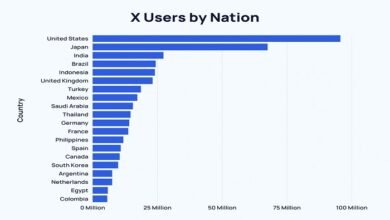User-X: The Future of Personalized Digital Experiences

Introduction
In an era where technology permeates every aspect of our lives, the way users interact with digital platforms is evolving at an unprecedented pace. The term “User-X” has emerged as a focal point in discussions about personalized digital experiences. But what exactly does User-X entail, and how is it shaping the future of our interactions with technology? This blog post delves into the concept of User-X, exploring its implications, applications, and the transformative impact it has on user engagement.
User-X
What is User-X?
User-X refers to a new paradigm in digital interactions, emphasizing highly personalized and context-aware user experiences. It encompasses the integration of advanced technologies such as artificial intelligence (AI), machine learning (ML), and big data analytics to tailor digital interactions to the unique preferences, behaviors, and needs of individual users.
The Evolution of User Experience
The journey from generic user interfaces to highly personalized User-X has been driven by the exponential growth of data and advancements in technology. Traditional user experience (UX) design focused on creating interfaces that cater to a broad audience. However, the rise of User-X signifies a shift towards customization, where digital experiences are meticulously crafted to align with the user’s specific context.
The Core Components of User-X
Data-Driven Personalization
At the heart of User-X lies the ability to harness vast amounts of data. This data, collected from various touchpoints such as browsing history, social media activity, and past interactions, is analyzed to gain insights into user preferences and behaviors. This analysis forms the foundation for creating personalized experiences that resonate with individual users.
AI and Machine Learning
AI and ML play a crucial role in the implementation of User-X. These technologies enable systems to learn from user data and continuously improve their ability to deliver relevant content, recommendations, and interactions. Through algorithms that adapt and evolve, AI-driven User-X systems can predict user needs and provide proactive solutions.
Context-Awareness
User-X is not just about personalization; it is also about context-awareness. This means understanding the user’s current situation, environment, and even emotional state to deliver interactions that are timely and relevant. For example, a context-aware User-X system might suggest a calming playlist when it detects that the user is stressed or provide route recommendations based on current traffic conditions.
Applications of User-X
E-Commerce and Retail
In the realm of e-commerce, User-X is transforming the shopping experience. Personalized product recommendations, tailored marketing messages, and dynamic pricing strategies are all examples of how User-X is enhancing customer engagement and driving sales. Retailers are leveraging User-X to create seamless, intuitive, and enjoyable shopping journeys.
Entertainment and Media
The entertainment industry is also reaping the benefits of User-X. Streaming services like Netflix and Spotify use AI-driven algorithms to recommend content based on user preferences and viewing/listening history. This level of personalization keeps users engaged and ensures they find content that aligns with their tastes.
Healthcare
User-X is making significant strides in healthcare by delivering personalized health recommendations and treatment plans. Wearable devices and health apps collect data on physical activity, sleep patterns, and vital signs, enabling healthcare providers to offer tailored advice and interventions. This approach not only improves patient outcomes but also promotes preventive care.
Challenges and Ethical Considerations
Data Privacy and Security
One of the primary challenges of implementing User-X is ensuring data privacy and security. The collection and analysis of vast amounts of personal data raise concerns about how this information is stored, shared, and protected. Organizations must adhere to strict data protection regulations and employ robust security measures to safeguard user information.
Bias and Fairness
AI and ML algorithms are only as good as the data they are trained on. If the underlying data contains biases, these biases can be perpetuated in User-X applications. Ensuring fairness and eliminating bias in AI-driven systems is crucial to avoid discriminatory practices and ensure equitable user experiences.
User Consent and Transparency
Transparency and user consent are fundamental to the ethical implementation of User-X. Users must be informed about how their data is being used and given the option to control their data preferences. Building trust through transparency is essential for the widespread adoption of User-X technologies.
The Future of User-X
Advances in Technology
The future of User-X is closely tied to ongoing advancements in technology. As AI, ML, and data analytics continue to evolve, the potential for creating even more sophisticated and intuitive user experiences grows. Innovations in natural language processing (NLP), computer vision, and augmented reality (AR) will further enhance the capabilities of User-X systems.
Integration with IoT
The Internet of Things (IoT) is set to play a pivotal role in the future of User-X. With the proliferation of connected devices, User-X can extend beyond traditional screens and interfaces to create seamless, interconnected experiences. Smart homes, wearable devices, and autonomous vehicles are just a few examples of how IoT integration will shape the User-X landscape.
The Human Element
Despite the technological advancements, the human element remains central to User-X. Understanding human psychology, behavior, and emotions is critical to creating meaningful and engaging experiences. The future of User-X will likely involve a harmonious blend of cutting-edge technology and deep insights into human nature.
Case Studies: User-X in Action
Amazon: Personalized Shopping Experience
Amazon is a prime example of User-X in action. The e-commerce giant utilizes AI and ML to analyze user behavior, purchase history, and preferences to offer personalized product recommendations. The seamless integration of User-X enhances the shopping experience, making it more intuitive and enjoyable for customers.
Netflix: Tailored Content Recommendations
Netflix leverages AI algorithms to analyze viewing patterns and preferences, providing users with highly personalized content recommendations. This approach not only keeps users engaged but also helps the platform retain subscribers by continually offering relevant and compelling content.
Apple Health: Customized Health Insights
Apple Health employs User-X principles to deliver personalized health insights and recommendations. By integrating data from various sources, including wearable devices, the platform provides users with tailored advice on fitness, nutrition, and overall well-being.
Implementing User-X in Your Organization
Assessing User Needs
The first step in implementing User-X is to understand your users’ needs and preferences. Conducting surveys, interviews, and analyzing user data can provide valuable insights into what your users expect from their digital experiences.
Leveraging Technology
Investing in the right technology is crucial for successful User-X implementation. This includes AI, ML, data analytics, and context-aware computing. Collaborating with technology partners or hiring skilled professionals can help you leverage these technologies effectively.
Continuous Improvement
User-X is not a one-time effort but an ongoing process. Continuously monitoring user feedback, analyzing data, and refining your strategies are essential to keep your User-X initiatives relevant and effective. Embrace a culture of continuous improvement to stay ahead in the rapidly evolving digital landscape.
Conclusion
User-X represents a significant leap forward in the realm of digital interactions. By harnessing the power of data, AI, and context-awareness, User-X offers highly personalized and engaging experiences that resonate with users on a deeper level. As technology continues to advance, the potential for User-X to revolutionize various industries is immense. Organizations that embrace User-X will be well-positioned to create meaningful and lasting connections with their users, ultimately driving success in the digital age.
FAQs
1. What is User-X?
User-X refers to the next generation of personalized digital experiences, leveraging advanced technologies like AI, ML, and data analytics to create highly tailored interactions.
2. How does User-X enhance user engagement?
User-X enhances user engagement by delivering personalized content, recommendations, and interactions based on individual preferences, behaviors, and contexts.
3. What are the ethical considerations of implementing User-X?
Ethical considerations include data privacy and security, bias and fairness in AI algorithms, and ensuring transparency and user consent in data usage.
4. How can businesses implement User-X?
Businesses can implement User-X by assessing user needs, investing in relevant technologies, and fostering a culture of continuous improvement to refine their personalized experiences.
5. What industries benefit most from User-X?
Industries such as e-commerce, entertainment, and healthcare benefit significantly from User-X by enhancing customer experiences, improving engagement, and driving better outcomes.




